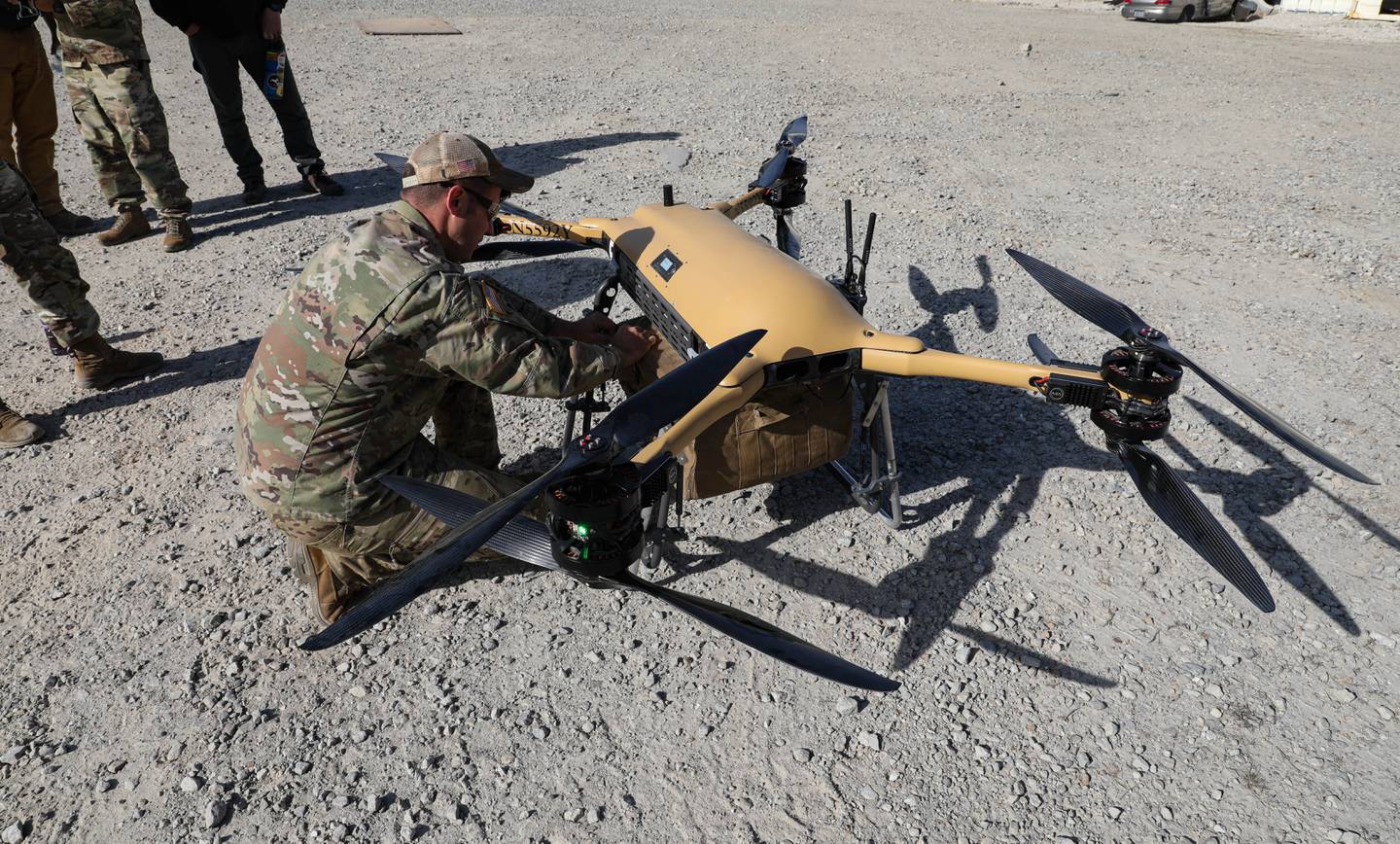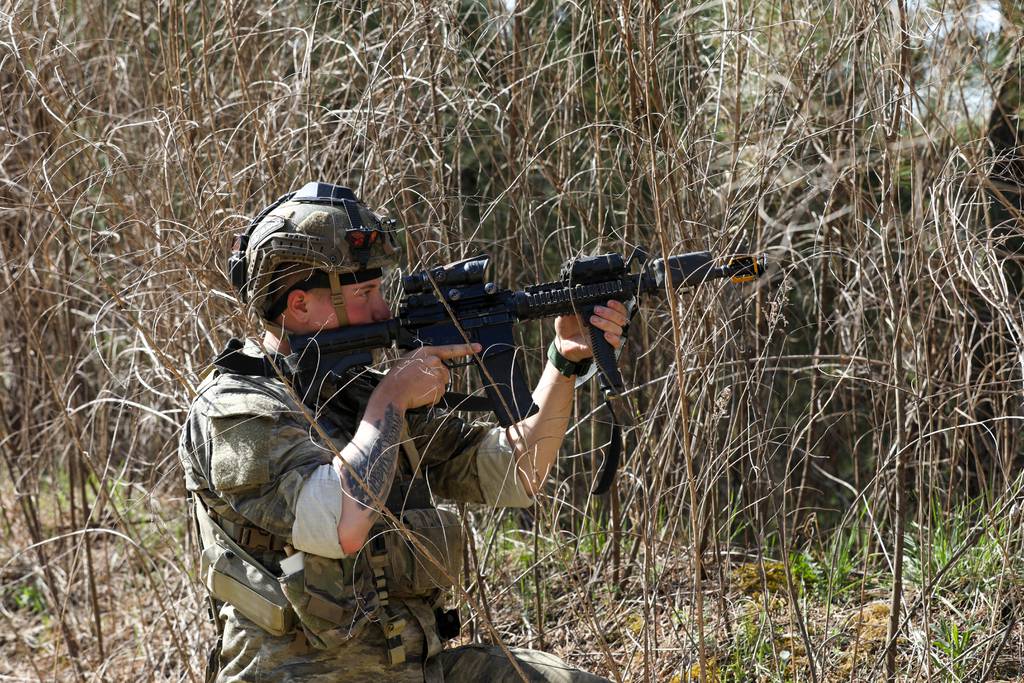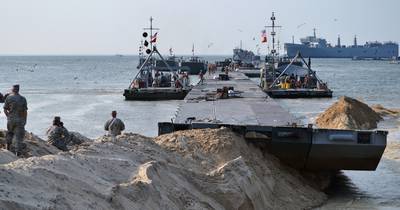FOLA, W.Va. (AP) — As Spot, Boston Dynamics’ dog-like quadruped robot, nimbly paced its way across rocky terrain, a large unmanned aerial vehicle silently hovered 100 feet overhead.
In the distance, a pair of AH-64 Apache helicopters could be seen orbiting above the ridgeline. Somewhere in the forest below, 220 soldiers from the elite 101st Airborne Division, who had been airlifted to three onsite landing zones, were taking part in a training scenario. Their mission: Locate and destroy an enemy’s air defense system.
DIRT Days 23 was in full swing April 20 at the Fola Experimentation Facility, a former Consol Energy surface mine complex that produced 105 million tons of coal before closing in 2012. Later repurposed as a military training site by the West Virginia National Guard, the site is now operated in partnership with the Civil-Military Innovation Institute, or CMI2, a nonprofit based in Morgantown.
The weeklong Driving Innovation in Realistic Training event aimed to involve soldiers in developing and field-testing new tactics and technology while taking part in challenging, realistic training exercises. An initial DIRT Days event took place at the Fola site last summer.
“DIRT Days is all about soldier-driven innovation,” said Mitch Kusmier, a vice president at CMI2 and a colonel in the Army Reserve.
“We curate the problems soldiers encounter with equipment in the field and then team up with WVU, the Army Research Laboratory and other partners to come up with solutions that are field-tested and proven to work,” he said.
The idea is to avoid sending newly designed technology and equipment into the field without input from the people who will be using it.
“When I was in Iraq, sometimes a container would show up full of gear designed to solve problems we didn’t know we had,” Kusmier said.
Retired Maj. Gen. Buff Blount, who commanded the 3rd Infantry Division when it led the three-week charge to capture Baghdad in 2003, was on hand to observe the activity at Fola.
“You don’t want to send experimental gear into the field,” he said. “We owe it to our soldiers to provide them with proven technology.”

Among gear being field tested at Fola last week was Saab’s Force-on-Force Training System-Next, in which soldiers wear laser-activated, sensor-equipped vests during simulated enemy actions to allow their movements and actions to be monitored and recorded for post-exercise critiquing.
“We love Fola,” said David Rees, director of training at Saab’s defense and security division. “You have a huge, open piece of terrain as well all these steep slopes and wooded areas. It’s a very unique and challenging site for training and testing.”
Other gear being tested last week included:
♦ An Advanced Dynamic Spectrum Reconnaissance system, developed at Vanderbilt University, that integrates and automatically tunes legacy Army radios to accommodate the operation of remote sensor networks for detecting enemy presence.
♦ A Mobile Immediate Need Engineering Resource, or MINER, unit — a containerized, self-powered shop structure equipped with 3-D printers and assorted tools to repair gear in the field.
♦ A new soldier-created machine gun ammunition bag system designed to replace the practice of cramming belts of ammo into standard rucksacks, often making them difficult to balance and slow to unload.
The new ammo bag, designed to serve M240 machine guns and nearing the production stage, may be low-tech, but it “can almost cut in half the time it takes to get a gun on a tripod and ready to fire,” said Lt. Col. Dale Marrou, a battalion commander with the 101st Airborne. “And it all came from one captain with an idea.”
Demonstrations of new technology also included using an unarmed aerial vehicle to make 150-pound resupply drops of MREs and ammunition.

Marrou said the DIRT Days event provided “a fabulous opportunity to work with newly developed technology and identify technology we want to be developed.” As a site for training exercises, Fola provides a terrain mix that “can’t be replicated at Fort Campbell,” the 101st Airborne’s home base in Kentucky, he said.
In addition to the 220 soldiers from the 101st Airborne, an additional 80 or so troops from the 82nd Airborne Division took part in DIRT Days.





